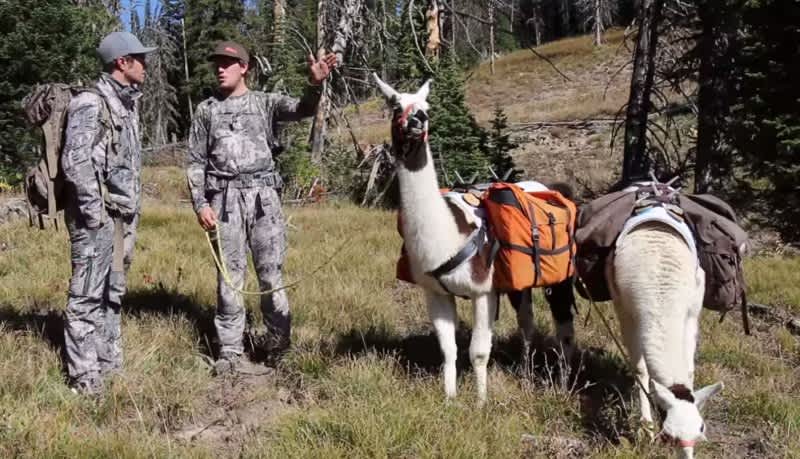Are Pack Llamas the Next Big Trend for Hunting?
OutdoorHub Reporters 06.29.15

Cheaper than traditional pack animals like horses or mules and more flexible than ATVs, llamas are quickly making a name for themselves among hunters as an alternative way to get their kills out of the woods.
While the idea may sound ludicrous to some, hunters like Thomas Baumeister of Montana call the use of pack llamas one of the best-kept secrets in the backcountry.
“It’s like having a little parrot on your shoulder,” Baumeister told the Independent Record. “They’re always looking at things and paying attention.”
Llamas have been used as pack animals since the very beginning of their relationship with humans. A llama can carry up to 400 pounds, requires less maintenance than a horse, can forage for itself, and can even stay at camp with nearly zero oversight for hours at a time. Llamas are also intelligent creatures with a fierce protective streak, especially against predators. For this reason, the animals have often been trained to replace sheep dogs for safeguarding livestock against carnivores like coyotes and wolves.
A close relative of camels, llamas can go for days without water and are experts at regulating their own internal temperature. One common worry is that the animals may be mistaken for game and shot by other hunters, so outfitters often deck their lamas in orange neck and body covers just to be safe.
You can see an example of elk hunting with llamas below:
“Llamas travel quietly as their padded hoof creates no loud hoof strike and their only vocalizing is occasional soft humming,” states Buckhorn Llama Co., a llama leasing and packing company based in Colorado. “They are non-reactive around meat and the smell of blood and they can efficiently carry meat from rough, remote kill sites. One hunter can easily load multiple llamas and subsequently handle them packing in a string. Ease of handling and quiet demeanor allow hunters to scout and hunt with llamas in tow without scaring or spooking their quarry. The llamas’ acute vision, hearing, and sense of smell can be valuable assets in spotting or locating game for observant hunters employing them in their hunt.”
The Baumeisters decided to rent a llama after a grueling family hunt several years ago during which Thomas shot a bull elk six miles from his truck. Getting the meat home took about 11 hours, and after that haul Thomas and his wife Dayna decided they needed something easier. Their search for alternatives brought them to Beau Baty, who runs Wilderness Ridge Trail Llamas.
Baty, a lifelong hunter who has loved the outdoors since he was a child, said he first discovered that the llama was an excellent pack animal during college, when he lived in rocky Idaho terrain too steep for most horses.
“I had a few goals when I was conducting my search for the ultimate pack animal,” Baty wrote online. “My first goal was to archery hunt big game into my 70’s. My second was to find an animal I could fly in to the Frank Church Wilderness of No Return, an animal that would go 20 miles in the most treacherous terrain day in and day out. I needed an animal that could scale Billy goat outcrossing’s and jump over 5 foot boulders and crawl under 3 foot overhanging deadfall. I needed an animal that could go 3 days without a drop of water. I wanted an animal that could live off of any sort of available forage and that I wouldn’t have to pack feed in for.”
That animal was the llama. Baty started his career as a outfitter with just 25 animals. He now owns 220 llamas and still upholds the animal—especially the Ccara breed—as one of the most efficient pack animals available.
Despite all these benefits, you may not see too many blaze-orange-wrapped llamas in the woods just yet. Current restrictions on import mean that there are only about 1,500 Ccara llamas in the United States.
What do you think? Would you consider bringing a llama along to your next elk hunt?

